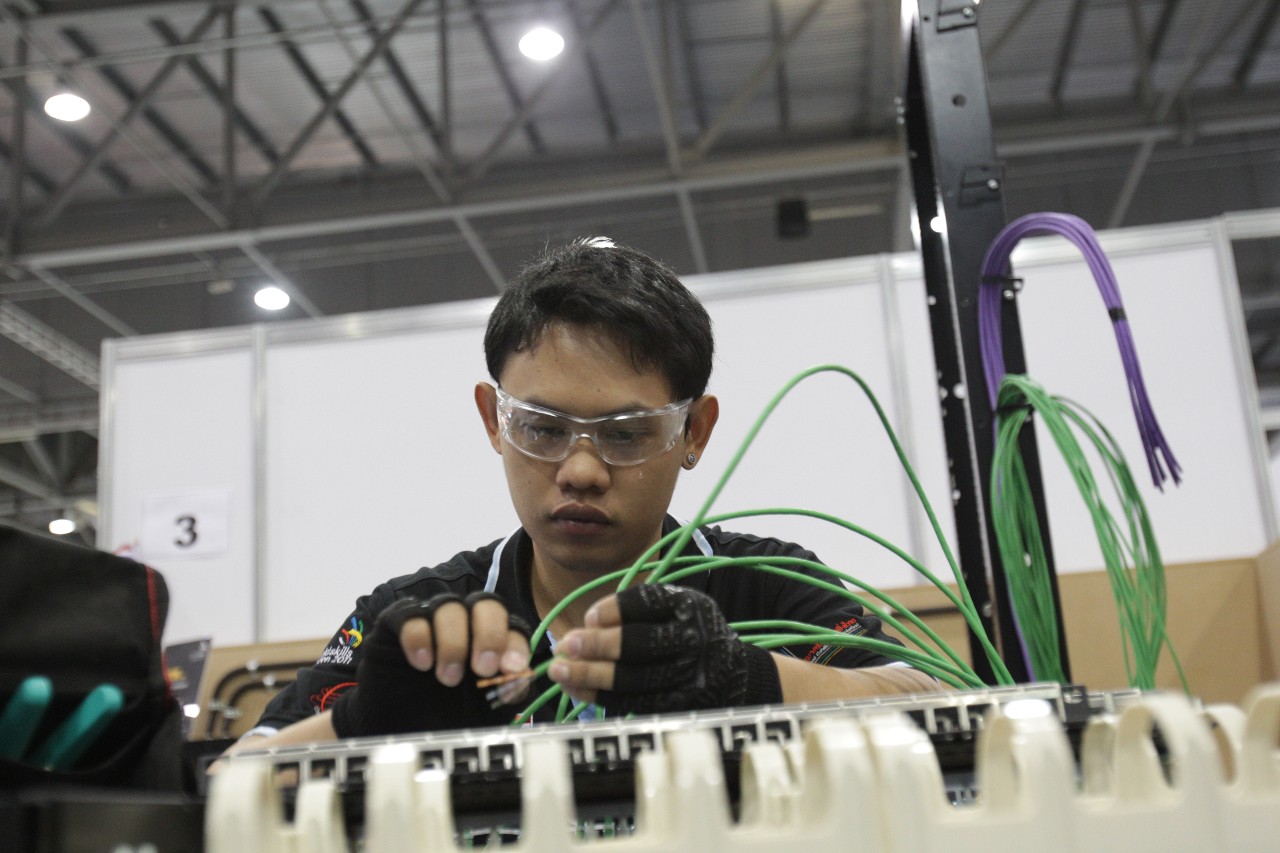Information Network Cabling 02
Cable is the medium through which information usually moves from one network device to another. There are several types of cable which are commonly used in network infrastructures. In some cases, a network will utilise only one type of cable, while other networks will use a variety of cable types. The type of cable chosen for a network is related to the network’s topology, protocol and size. Understanding the characteristics of different types of cable and how they relate to other aspects of a network is necessary for the development of a successful network.
The Network Cabling Technician constructs the infrastructure of all the telecommunication networks such as those for Wide Area Networks (WAN), Local Area Networks (LAN) and Cable TV (CATV). This work is highly technical and requires detailed specialised knowledge in order to independently design and install networks that meet clients’ needs and conforms to recognised industry standards. The technician will create the foundation which is the basis for the network, install cables appropriate for the intended use, maintain and test and commission the network.
The technician / installer may work for either a telecommunications or a communications network company. He or she will install network cabling for businesses both large and small or for domestic users, for services such as cable TV, telephone and broadband installations.
Communications networks are crucial to the efficiency of business and commerce. Network failure can result in wasted time and lost revenue. Robust and reliable communications networks are therefore critical to business success.
Required skills
Attention to detail, technologically savvy, critical thinker, problem-solver
Career info
Cable is the medium through which information typically moves from one network device to another. The network cabling technician constructs telecommunication networks infrastructure, and installs the cabling for business and domestic users for services such as broadband, cable television and telephone.
This work is highly technical and requires detailed specialized knowledge in order to independently design and install networks that meet clients’ needs and conform to recognized industry standards.
In all cases, robust and reliable communications networks are critical to sustaining business success and maintaining the high level of connectivity we have come to expect in our world today.
At the Competition
The Competitor must have an appropriate level of knowledge and understanding of both the industry and Competition safety standards. The Competitor must also have the knowledge to select the appropriate materials and consumables during the Competition. The Competitor will be judged on:
- Test Project modules simulate the telecommunication network
- Test Project modules which cover installation technologies regarding overall networks such as fibre optic cables and copper cables
- Evaluating the capabilities of troubleshooting
- Introducing Test Projects incorporating wireless technology (such as Wi-Fi)
- Introducing Test Projects constructing high-speed Ethernet such as 10GE and LAN
- Test Projects of Installing or utilising various network applications
The Competitor shall carry out the following tasks:
- Terminate balanced-twisted pair cables in: outlets, patch panel, RJ modular plugs and jacks, etc.
- Terminate a coaxial cable
- Terminate/connect optical fibre
- Install cable distribution racking systems
- Install fibre cables, balanced-twisted pair cables, coaxial cable
- Install FO closures, termination box, TO, patch panels, etc
- Install wireless network
- Install some applications for Ethernet
- Certification test of a copper and of a fibre cable's network

